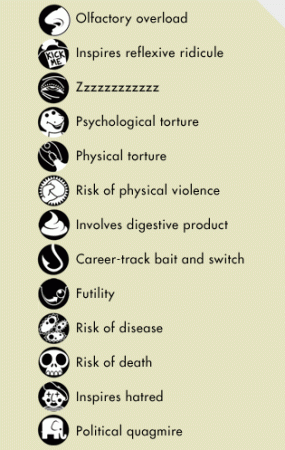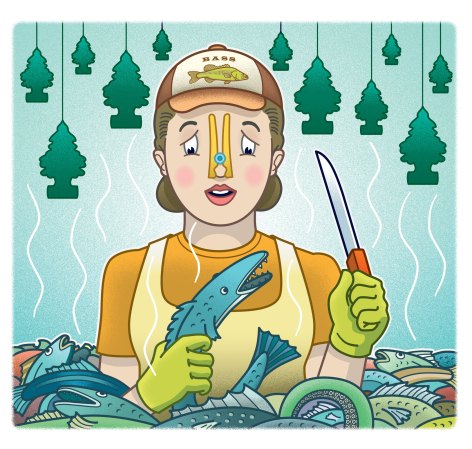

Think your job’s bad? Try dragging a bedspread around tick-ridden thickets, pausing regularly in the 100-degree heat not to squeegee the sweat from your brow but to tweeze dozens of the tiny pests into a collection jar. Reconsidering your career choice? Imagine training for years as a veterinarian, only to find yourself engaged in labwork designed to make the tail-wagging puppies in your charge sick, knowing all the while that when the study is over, the pooches will be euthanized. Having a bad day? Just be glad you’re not spending it in minute examination of unusual growths on a dozen or so people’s posteriors.
But don’t feel sorry for the scientists and staffers employed in these travails—they probably wouldn’t want your job any more than you’d want theirs. Case in point: As we canvassed hundreds of scientists for worst-job nominees, an inexplicable thing happened—the glorious and esteemed calling known as “science journalist” kept garnering votes. Something about missing out on the chance to do real science ourselves, coupled with our need to simplify (or was it “oversimplify”?) the subjects we cover.
That, of course, is part of the fascination of an exercise such as this. Job horror is in the eye of the job holder. And to the great benefit of society, most of these job holders simply don’t regard their occupation as being that horrible—or, at any rate, are willing to endure the horrors for the opportunity to do virtuous and important work. We salute them.
Click here to launch our special fifth anniversary gallery to relive five years of the the most inglorious, demoralizing, and, in the end, beloved professions. Does yours make the list?

































































